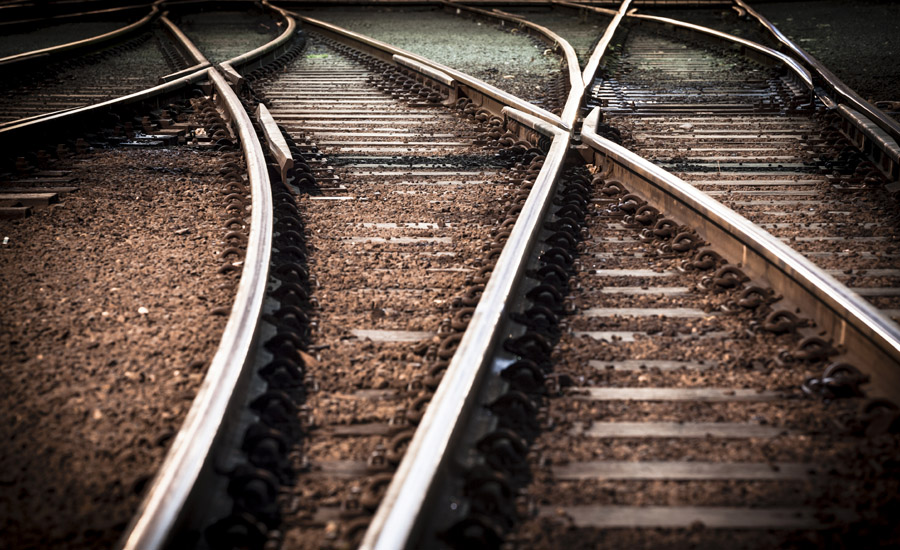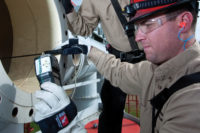About 70 trains rumble through Spokane each day. Since those trains began hauling flammable crude oil from North Dakota’s Bakken region to Western Washington ports and refineries in 2012, state and local attention to rail infrastructure has increased.
The fiery derailment of a Union Pacific oil train last summer in the Columbia River Gorge was caused by one or more broken bolts on a curved section of track. No one was injured, but the town of Mosier, Oregon, was evacuated while the oil in four tank cars burned for about 14 hours.
Federal regulators later cited lax inspections by Union Pacific Railroad, which agreed to more frequent and rigorous track inspections.
“Track defects have been the cause of most of the derailments that we’ve seen over the last few years,” said Jason Lewis, transportation policy adviser for the Washington Utilities and Transportation Commission. “Integrity of the track is essential. … Track inspectors are on the front lines.”
In most cases, those inspectors are railroad employees.
State and federal governments employ just a handful of track inspectors to monitor Washington’s 2,500 miles of railroad tracks.
Washington recently hired its second track inspector. The Federal Railroad Administration has four inspectors based in the state – two in Vancouver, one in Seattle and one in Spokane.
“The railroads are required to be on the track more than state and federal inspectors can be, simply because of resources,” Lewis told the Spokane-Review.
Track inspection is a requirement the railroad takes very seriously, Wesley Pruitt, BNSF’s division engineer told the Spokane-Review.
Each inspector is responsible for about 50 miles of track. They follow federal protocols for inspections, and they get to know the territory so well, it’s almost like looking for defects in your own home, Pruitt said.
Becoming a track inspector requires two weeks of classroom training, plus written and field tests.
They’re union jobs, and BNSF employees work their way up from other positions, Pruitt said.
The median wage for a railroad inspector is $73,000, according to the U.S. Bureau of Labor Statistics.
Railroads use manned and unmanned vehicles to inspect track, Courtney Wallace, a BNSF spokeswoman, told the Spokane-Review. Lasers collect measurements about track levelness, alignment and other track metrics.
BNSF has started using drones to evaluate infrastructure, too.
But the BNSF inspectors also get out and walk the tracks regularly. Visual inspections are often one of the best ways to interpret the data gathered through mechanical means.
Source: www.spokesman.com The Spokesman-Review Spokane WA


